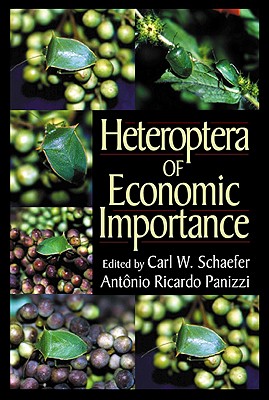Presents an account of true bugs, from the bloodsucking bed bug to the dreaded assassin bug. This title offers biological information on the major families of Heteroptera. Each entry includes a detailed life history, helping to evaluate the impact of harmful and useful Heteroptera. It also provides information to determine management methods.
Heteropterans regularly cause a wide variety and large number of problems for humans - at times on a catastrophic scale. The 37,000 described species of this suborder including many pests, disease transmitters, and nuisances exist worldwide, inflicting damage on crops, forests, orchards, and human life. Inspired by the widespread economic impact of this activity, Heteroptera of Economic Importance presents the most thorough, detailed account of true bugs to date, from the bloodsucking bed bug to the dreaded assassin bug. It is the definitive source for biological information not only on true bugs of economic importance, but on the general biology of the major families of Heteroptera as well.
Heteroptera of Economic Importance integrates the best of insect-focused and crop-oriented references, synthesizing the biology, behavior, and ecology of the true bugs. Each entry includes a detailed life history, helping you to evaluate the impact of harmful and useful Heteroptera. The thorough, comprehensive bibliographies support further research. Separate indices to insects and plants let you adapt the book to your use. It covers the physiology of plant damage and predation by this cosmopolitan group. This coverage, along with information on control measures and natural enemies, helps you evaluate and compare the best methods of management.
Heteroptera can be serious crop pests, harmful to humans, or can be valuable as biological control agents. This work discusses them individually, with expert presentation of the biology, distribution, damage, and control of each economically significant insect. As a resource that lets you easily access information and research on related bugs globally, Heteroptera of Economic Importance lends itself to sharing of ideas and information across geographical boundaries which will inevitably yield more research, new ideas, and better control.
Get Heteroptera of Economic Importance by at the best price and quality guranteed only at Werezi Africa largest book ecommerce store. The book was published by Taylor & Francis Inc and it has pages. Enjoy Shopping Best Offers & Deals on books Online from Werezi - Receive at your doorstep - Fast Delivery - Secure mode of Payment
 Jacket, Women
Jacket, Women
 Woolend Jacket
Woolend Jacket
 Western denim
Western denim
 Mini Dresss
Mini Dresss
 Jacket, Women
Jacket, Women
 Woolend Jacket
Woolend Jacket
 Western denim
Western denim
 Mini Dresss
Mini Dresss
 Jacket, Women
Jacket, Women
 Woolend Jacket
Woolend Jacket
 Western denim
Western denim
 Mini Dresss
Mini Dresss
 Jacket, Women
Jacket, Women
 Woolend Jacket
Woolend Jacket
 Western denim
Western denim
 Mini Dresss
Mini Dresss
 Jacket, Women
Jacket, Women
 Woolend Jacket
Woolend Jacket
 Western denim
Western denim
 Mini Dresss
Mini Dresss






























































